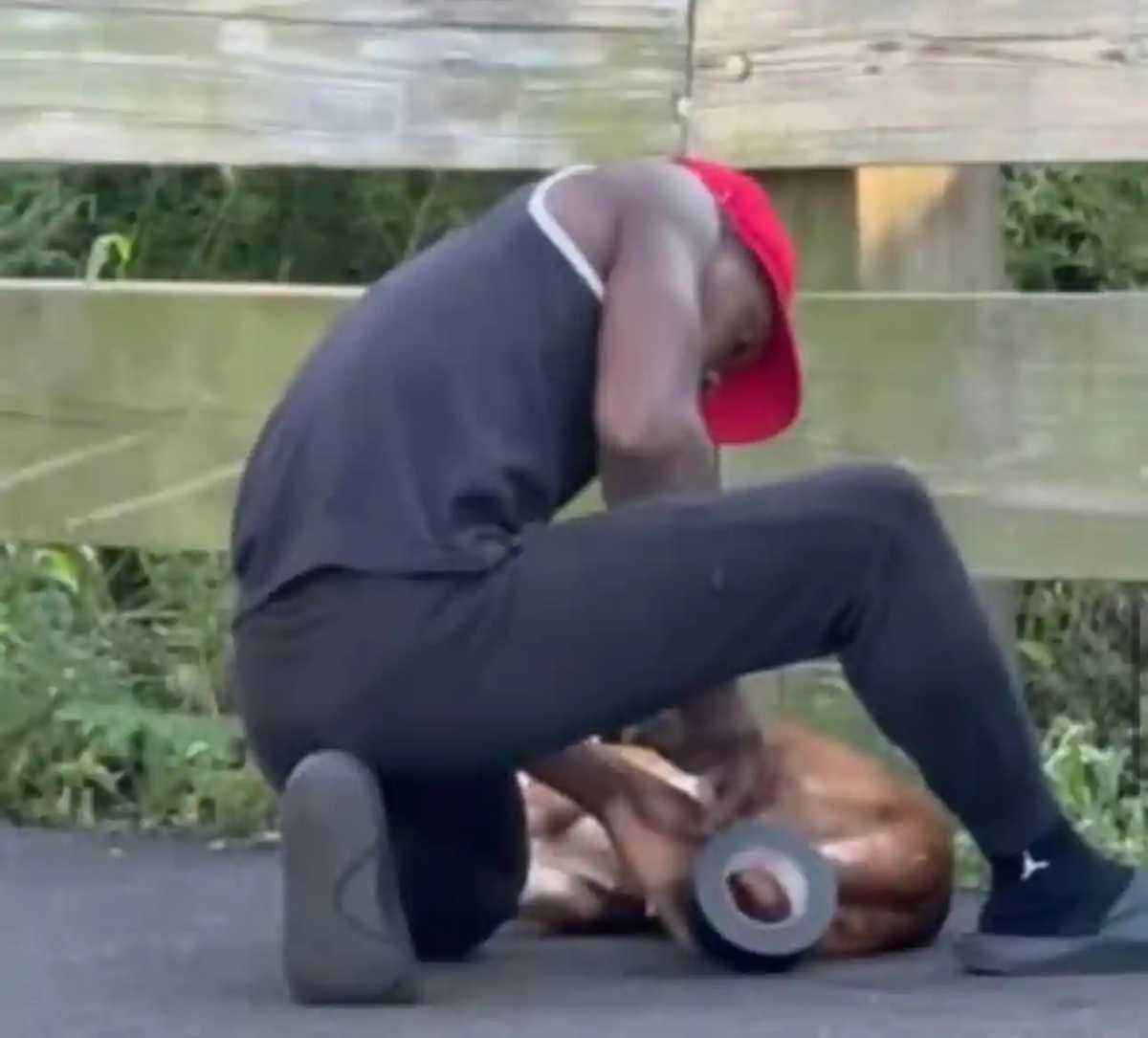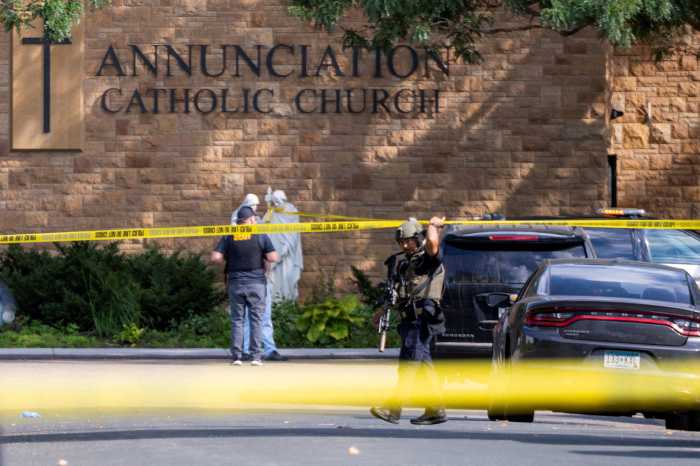Three veterans of Iraq and Afghanistan arrived unannounced on the University of Cincinnati campus to lead classroom discussions with about 250 students and shed light on their military lives.
As students sauntered into a lecture hall one early morning for what they thought would be a lesson on European history, many were surprised to find the uniformed service-members standing in for their familiar, tweed-coat-clad professor.
“At first I thought they were coming to try and recruit people,” freshman history student Rose Barrett told American Forces Press Service.
But what followed were presentations by three of 10 military members participating in the Defense Department’s “Why We Serve” outreach program, which places military speakers before audiences at venues across the United States.
“I just want to start by saying that we’re not recruiters,” Marine Chief Warrant Officer Daniel K. Winnie, decked out in “dress blues,” told students as he opened his remarks. “As a matter of fact,” he continued, “if you ask me a question about it, I’d tell you that Iraq sucked at different times.”
Winnie went on to share with students an anecdote from Nasiriyah, Iraq, where amid a particularly fierce gunfight with insurgents aboard a stolen bus, the Marine frantically worked to free a comrade’s vehicle that was entangled in a metal briar patch of concertina wire.
Just as Winnie snapped through the last barbed-wired strand, he slipped and fell into a bed of slimy mud. The bolt cutters he was using fumbled from his hands and gashed his face. Meanwhile, gunfire from the busload of enemies whizzed over his head.
“So now I’m bleeding, laying on my back in the mud, and some (expletive) is shooting at me from a bus,” he told the audience, drawing laughter. “Then my digital watch beeps to tell me that I’m 30 years old.”
Winnie said he was at the end of his rope that night, until his gunner and driver surprised him. The battle buddies had constructed a crude birthday cake for him, made from cracker crumbs, granola and hot chocolate mix, and placed the makeshift tiding in a plastic military-issue meal wrapper.
“They stuck a match in it and sang me ‘Happy Birthday,’” said the Marine, who hails from Everett, Wash., his voice imbued with the camaraderie that buoyed his spirits while many miles from home. “And that is the best birthday I’ve had, ever.”
The panel was hosted by history professor Tom Lorman, who for the second consecutive semester yielded the lectern to service-member speakers. To maintain the presentations’ spontaneity, Lorman had not promoted the speakers’ appearances around campus, nor had he informed his students in advance about the visit.
The professor’s pupils arrived to his regularly scheduled courses, expecting to hear lectures on the Napoleonic Era or the French Revolution. But as one bleary-eyed, coffee clutching latecomer discovered, the history lesson — co-taught by Iraq war veteran Marine Capt. John N. Sand — would cover the age of howitzers and hellfire missiles, not bayonets and bastilles.
Sand, whose steely, blue-eyed gaze projects a sense of inborn leadership, began his presentation by showing a video clip of the Battery T, 5th Battalion, 10th Marines under his command loading and firing 155 mm mortars from an M777 lightweight howitzer.
From March through October 2007, Sand served as the battery commander for his unit at Camp Fallujah, in Iraq’s Anbar province. The unit was responsible for providing fire support and mounted security patrols for Regimental Combat Team 6.
During Sand’s deployment, his battery fired 1,300 artillery rounds — which can hit a target up to 18 miles away and create a blast the size of half a football field — and provided some 500 mounted security patrols for explosive ordnance disposal teams and Army engineers.
But none of these, in the 38-year-old Marine’s eyes, is the most vital statistic of his seven-month deployment.
“The thing I’m proudest of is that I left the U.S. with 131 Marines, and I returned with 131 Marines,” he said.
Although he returned without having suffered loss of life, limb or Corps member from his 131-Marine unit, Sand touched on the sacrifices he did make while in Iraq.
He played a whirlwind slideshow, scored by a poignant rock tune, which showed students the everyday scenes that lay before Sand while he was deployed. A photograph of a convoy rolling along a dusty Anbar province highway dissolved into snapshots of smiling Iraqi children clamoring for the camera’s attention.
From a picture of an artillery piece in action, the slideshow jumped to Sand’s Marines surrounding visitor Katie Couric, CBS Evening News anchor, the armor-clad entourage standing against a backdrop of rising minarets.
Tucked into the seams of the presentation by Sand, the father of three daughters, were two photos that the Ottawa, Ill., native subtitled, “What I missed.” The picture with the caption “Isabella’s first soccer game,” shows Sand’s second-oldest daughter, dressed in shin guards and cleats, on a bright green patch of grass.
The other photo, “Ainsley’s first birthday,” captures his youngest daughter, her diapered rear end planted in her mother’s lap, attempting to blow out a single birthday candle.
“You don’t think about the faces or the number of families that are affected,” said Barrett, the freshman history student. “I think the (speakers) made everyone respect them more by helping us understand what they go through in their personal experiences.”
Before joining the Air Force ROTC program, Air Force Capt. Edward Szczepanik thought his 75-mph curve ball would earn him a free ride to college. He was wrong. Szczepanik then hedged his bets on academics, hoping that decent high school grades would merit a scholarship. He was wrong again.
“I’m thinking, ‘How am I going to do this? I don’t want to be in debt when I graduate school,’” the engaging Szczepanik recalled to students. “‘What are my options here?’”
It was then that Szczepanik’s high school guidance counselor suggested Air Force ROTC. The elderly woman, he recalled, said the only requirements for earning full tuition from the Air Force were “putting on your little costume once a week and running around.”
“I said, ‘I’d pretty much do anything once a week if you’re going to pay me my entire scholarship,’” he said, as the audience laughed. “‘I’d dress up like the school mascot and stand in the middle of the road directing traffic once a week.’”
Szczepanik continued to regard his ROTC commitment with some levity until the Sept. 11, 2001, terrorist attacks occurred during his junior year at the University of Miami in Oxford, Ohio.
“I remember I was in my bedroom when I saw the two planes crash into World Trade Center, and it became very real that I wouldn’t be doing four years (in the Air Force) in a U.S. city then get out of the military. I’m probably going to be overseas,” he recalled. “I thought, ‘If I’m going to be overseas and I’m in the Air Force, I’m going to be flying something while I’m over there.’”
Since graduating from college, Szczepanik has completed two years of undergraduate pilot training, flown 900 hours in a C-17 Globemaster III aircraft — 200 of which were combat hours — and about 100 combat sorties, including dangerous missions over Afghanistan.























